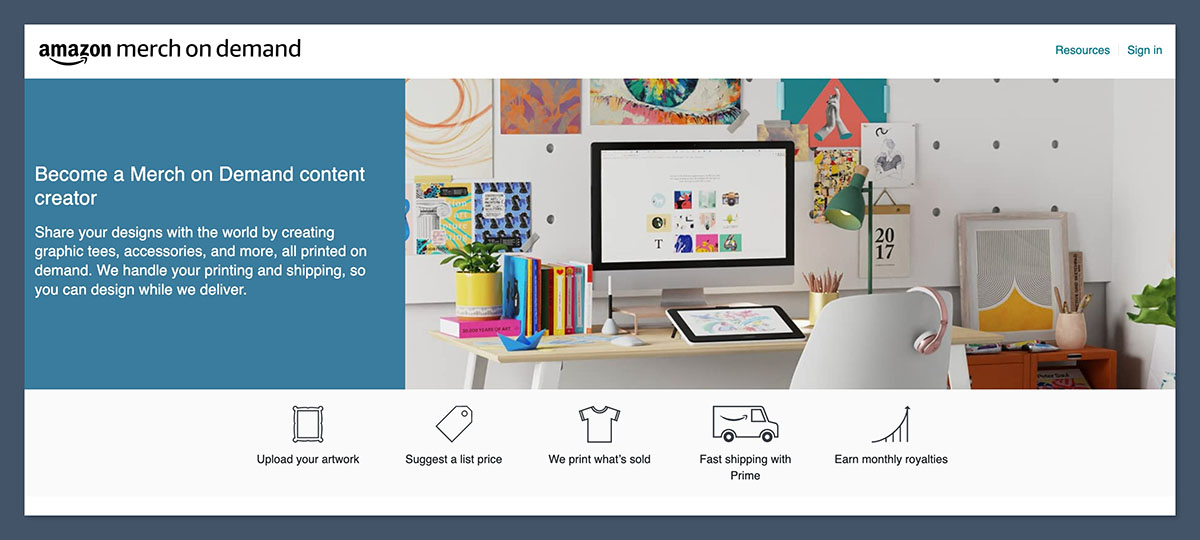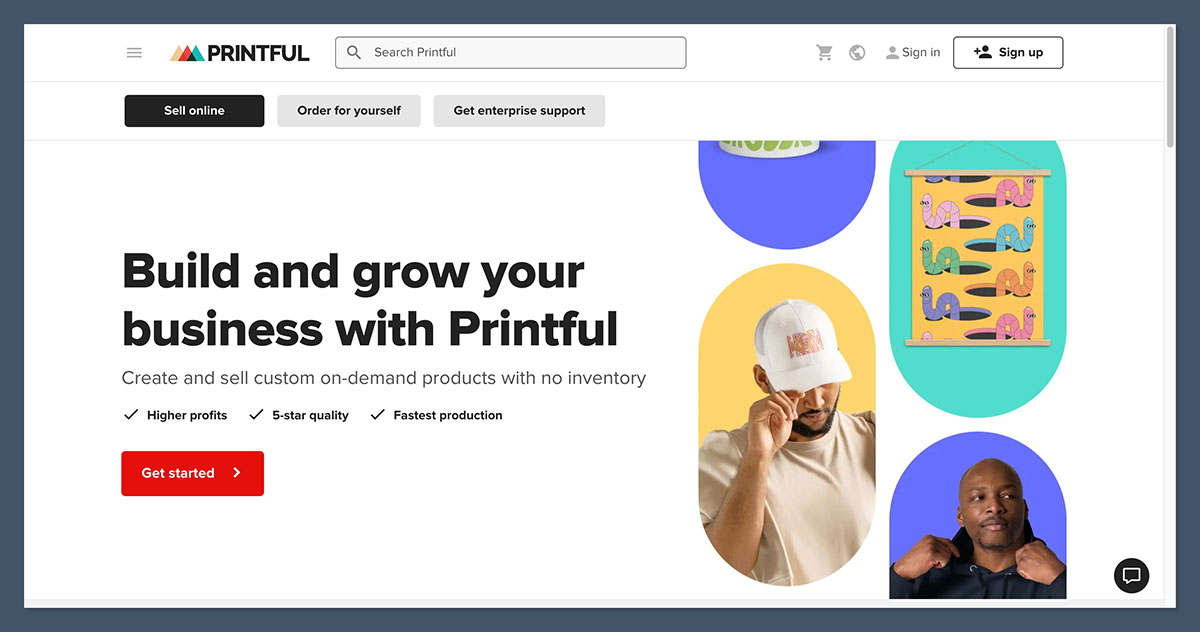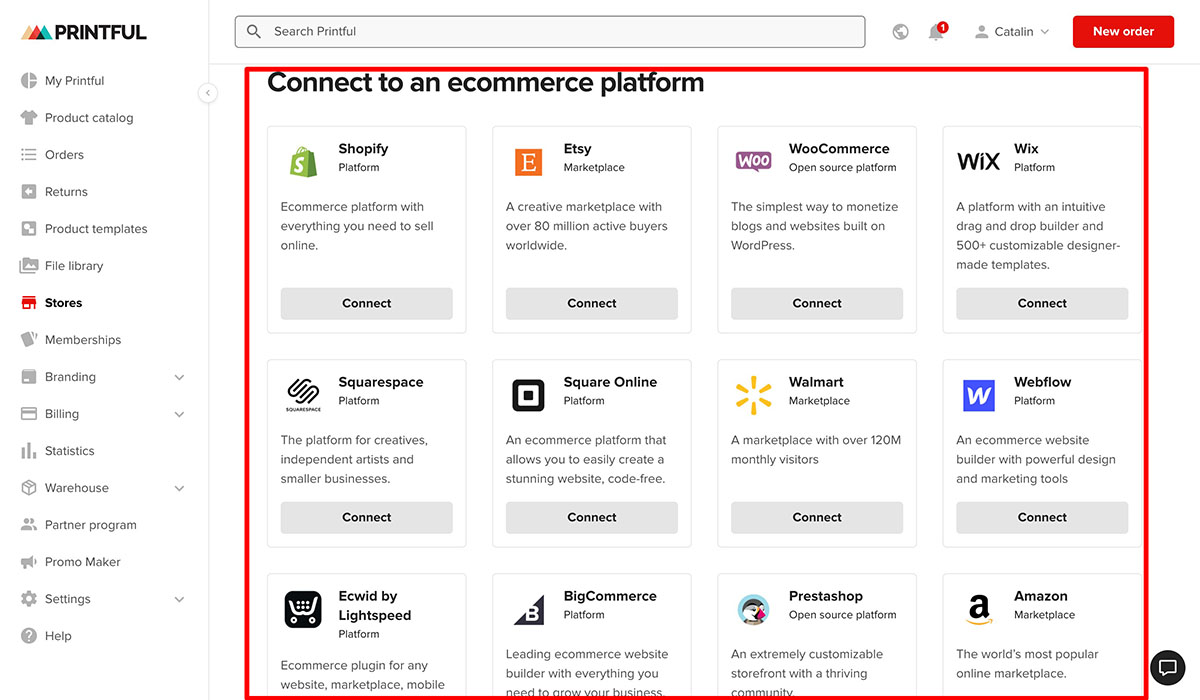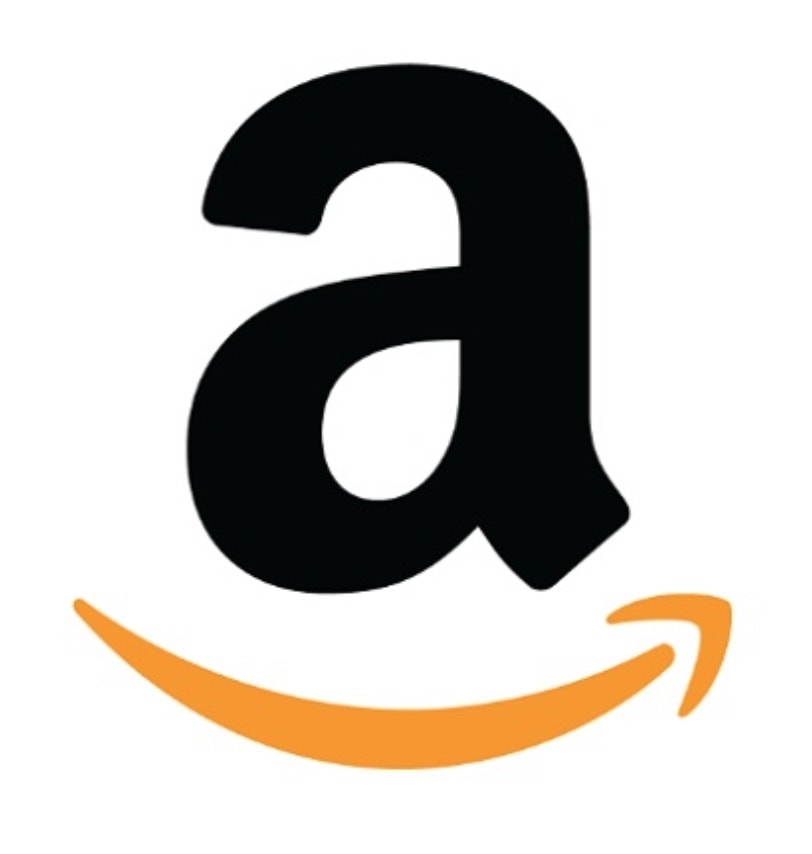I’ve spent over 300 hours testing print-on-demand platforms. After using both Printful and Amazon Merch on Demand across multiple niches, I’ve seen exactly where each one shines — and where they fall short.
Here’s the quick answer:
Printful is best if you want to build your own brand and sell across ecommerce platforms. Amazon Merch on Demand is best if you want to sell passively on Amazon without handling fulfilment, storefronts, or customer service.
Let’s break it all down.
Printful vs Amazon Merch on Demand: Quick Verdict
| Feature | Printful | Amazon Merch on Demand |
|---|---|---|
| Best For | Building a brand, ecommerce scaling | Passive income, Amazon marketplace |
| Starting Cost | Free, but you pay for each order | Free to join, no costs upfront |
| Product Range | 300+ items | ~20 SKUs (shirts, hoodies, etc.) |
| Brand Control | Full branding, labels, packaging | No branding, Amazon owns everything |
| Traffic | Must drive it yourself | Built-in Amazon traffic |
| Payouts | Your pricing, your margin | Royalties set by Amazon |
| Support | 24/7 support and tutorials | Limited support |
| Fulfilment Time | 2–7 business days | Prime eligible, varies by item |
Best for Pricing: Amazon Merch on Demand

Printful and Amazon Merch have very different pricing models — and that changes everything depending on how you plan to sell.
Let’s start with Amazon Merch.
This is hands-down one of the most accessible ways to get started with print-on-demand. You don’t pay anything to join. There are no monthly platform fees. No inventory costs. No shipping rates to configure. Amazon covers it all — and takes their cut after the sale.
Amazon Merch on Demand
- Completely free to use. No subscription fees or upfront costs.
- Amazon handles production, fulfilment, and customer service.
- You earn royalties per sale based on Amazon’s set pricing tiers.
- You can’t adjust product base costs or shipping charges.
- Pricing is locked within specific ranges depending on product type.
For example, if you sell a standard t-shirt at the recommended price of $19.99, Amazon typically pays a royalty of around $5.23, depending on the marketplace.
That may seem low, but it’s all hands-off. You’re not paying for inventory, ads, or customer support.
Now compare that with Printful. It’s still free to sign up, but there’s no “royalty” model. You’re running your own business, which means you’re responsible for everything — the good and the bad.
Printful
- Free to sign up and use, but you pay for every product once it’s ordered.
- Shipping costs are on top of base pricing.
- You set the final price and control your margins.
- You’ll need to invest in marketing or marketplace fees (Shopify, Etsy, etc.)
- No minimum order quantities, but margins depend heavily on your retail price.
Here’s a quick pricing example:
| Product | Printful Base Cost | Estimated Shipping (US) | Your Sale Price | Your Profit |
|---|---|---|---|---|
| T-shirt (Bella+Canvas 3001) | $13.95 | $3.99 | $24.99 | ~$7.05 |
| Hoodie (Gildan 18500) | $22.95 | $6.50 | $39.99 | ~$10.54 |
These numbers can look better than Merch royalties, but they come with more effort. You’ve got to manage sales tax, fulfilment syncs, abandoned cart flows, and everything else that comes with ecommerce.
The Winner: Amazon Merch on Demand
If you’re bootstrapping or just testing ideas, Merch’s zero-cost model is unbeatable. It’s a no-risk way to see if your designs can sell. But if you’re looking for profit flexibility or want to scale a store into something brandable and long-term, Printful gives you control — for a price.
Best for Product Variety & Branding: Printful

If you’re trying to build a POD brand with custom touches, this one isn’t even close. Product variety and branding flexibility are two of the most important levers for any ecommerce business.
And Printful gives you both in a way Amazon Merch simply can’t.
Let’s talk about product range first. With Printful, you’re not limited to just clothing. You can build collections around nearly any niche — from home decor to streetwear to pet accessories. This kind of diversity lets you experiment, test markets, and pivot quickly.
Printful offers:
300+ products including:
- T-shirts, hoodies, sweatshirts
- Hats, bags, socks, aprons
- Phone cases, mugs, tumblers, water bottles
- Wall art, posters, canvas prints, blankets, pillows
Print techniques like:
- Direct-to-garment (DTG)
- Embroidery
- All-over sublimation
Custom branding features:
- Inside neck labels
- Custom packing slips and labels
- Branded pack-ins (like thank you cards or discount codes)
This flexibility makes Printful ideal for sellers who want to stand out in crowded markets. Whether you’re building a streetwear brand or a curated niche shop, Printful gives you the tools to make it feel like yours.
Now compare that to Amazon Merch on Demand.
Amazon Merch on Demand gives you:
Limited product selection:
- Standard t-shirts
- Premium tees
- Long sleeves
- Sweatshirts and hoodies
- Tank tops and popsockets
No customisation options:
- No branding, no packaging control, no labels
- Every product looks the same as your competitor’s
Amazon owns the customer experience:
- You don’t control how the product is shown
- You don’t get to retarget buyers or follow up
Here’s a quick comparison:
| Feature | Printful | Amazon Merch on Demand |
|---|---|---|
| Product Types | 300+ SKUs across multiple categories | About 20 SKUs, mostly apparel |
| Branding Options | Labels, pack-ins, packaging | None |
| Mockup Tools | Built-in with customisation | Basic image uploader |
| Ownership of Listings | Fully owned and customisable | Hosted by Amazon |
| Custom Print Methods | DTG, sublimation, embroidery | DTG only |
The Winner: Printful
If you’re serious about long-term brand building, Printful gives you every tool you need. You’re not just uploading designs — you’re building a full customer experience, end to end.
Amazon Merch works well for low-effort designs or passive testing, but it offers no flexibility on products or presentation. If brand identity matters to you, Printful is the clear choice.
Best for Business Control: Printful
One of the biggest differences between these platforms comes down to control. With Printful, you’re building something that’s truly yours.
You own the store, the customer relationship, and the brand. With Amazon Merch, you’re essentially renting shelf space from Jeff Bezos — with all the limitations that come with it.
When I use Printful, I know every aspect of the business is in my hands. That means I can optimise my product pages, run ads, collect emails, and build long-term relationships with buyers. It’s not just about selling a shirt — it’s about building an asset.
Here’s what you own with Printful:
- Your storefront and platform
Whether you’re using Shopify, WooCommerce, or Etsy, you’re in control of where and how your products are sold. - Your customer data
You capture emails, shipping addresses, and buyer behaviours. This gives you the power to retarget, upsell, and nurture loyalty. - Your branding and pricing strategy
You choose how products look, how they’re priced, and how they’re presented to the customer. - Your margins and marketing
You can test pricing models, run promotions, and grow your profit with backend funnels and repeat purchases.
In contrast, Amazon Merch keeps you at arm’s length from your own business.
With Amazon Merch:
- No access to buyer information
You don’t get emails, phone numbers, or any data you can use to grow your brand. - No listing control
Amazon controls the formatting, categories, and even how your product titles appear in search results. - Strict content and account policies
Listings can get taken down without warning. If you violate Amazon’s terms — even unintentionally — your entire account can be suspended or closed. - You don’t own the audience
You may make sales, but you’re not building a customer base. If Amazon changes its rules or algorithm, your income disappears.
Here’s a breakdown:
| Ownership Area | Printful | Amazon Merch on Demand |
|---|---|---|
| Customer Data | Full access (emails, profiles) | No access |
| Platform Control | Choose platform and customise store | Locked inside Amazon |
| Listing Customisation | Full control over product pages | Very limited, preset formats |
| Risk of Termination | Low, platform-dependent | High — Amazon can suspend at will |
| Retargeting & Email | Yes, via owned list or email tools | Not possible |
The Winner: Printful
Owning your audience is critical if you want to build a real business. With Printful, you’re in control — of the experience, the data, and the future.
Amazon’s system is efficient but fragile. You don’t control anything but your uploads. And that means if Amazon changes the rules, you’re out of luck.
Best for Passive Income: Amazon Merch on Demand
This is where Amazon shines. It’s one of the easiest and most hands-off ways to earn money online with print-on-demand — especially if you’re new, have limited time, or want to avoid the logistics side of ecommerce.
Amazon Merch is built for passive sellers. Once your design is uploaded and approved, your job is basically done.
There’s no need to deal with customers, set up stores, or worry about fulfilment. It’s a true plug-and-play model.
Amazon Merch’s advantages:
- Massive organic reach
Your products appear directly on Amazon — one of the world’s most visited ecommerce sites. Millions of potential buyers search daily. - Eligible for Prime shipping
Most products ship fast and come with the trust and reliability of Amazon Prime, which increases conversions. - Set it and forget it
Upload your design, set your price, and walk away. Amazon handles fulfilment, returns, payments, and customer service. - Automated royalties
Every time you make a sale, Amazon deposits your earnings based on its royalty structure. You don’t need to issue invoices or chase payments.
It’s ideal for side hustlers, artists, and creators who want to dip into ecommerce without the operational workload.
In comparison, Printful gives you more control — but requires more ongoing involvement. It’s a better option for those who want to actively run and grow a real store.
Printful requires:
- Driving your own traffic
You’ll need to rely on SEO, paid ads, influencers, email marketing, or a social presence to bring in sales. - Managing the backend
While fulfilment is automatic, you still have to handle pricing strategies, sales tax, shipping policies, and potential customer issues. - Consistent effort
Printful is ideal for long-term brand growth, but it needs structure — whether that’s through Shopify, Etsy, or your own store.
Here’s a quick look at how they compare:
| Feature | Amazon Merch on Demand | Printful |
|---|---|---|
| Setup Time | Extremely fast | Requires store setup |
| Customer Management | Handled by Amazon | You manage it |
| Shipping & Returns | Amazon handles it all | Printful handles fulfilment, you handle policies |
| Passive Selling | Yes | No – requires traffic & strategy |
| Royalty/Profit Model | Fixed royalties | Custom pricing & profit margins |
The Winner: Amazon Merch on Demand
If you’re after low-effort, scalable income, Merch is a clear winner. You upload, set pricing, and Amazon does the rest. It’s not for building a brand or collecting emails — but for making passive sales while you sleep, it’s hard to beat.
Best for Fulfilment and Shipping: Printful
Both platforms offer hands-off fulfilment, but they work very differently under the hood — and if you care about shipping speed, consistency, and customer satisfaction, these differences matter more than you’d think.
With Printful, the process is transparent. Once an order is placed through your store, Printful picks it up automatically, prints the product, and ships it directly to the customer.
You can monitor each stage in real-time through your dashboard, which gives you confidence and visibility — especially if you’re managing customer expectations.
Printful fulfilment:
- Production time
Most products are fulfilled in 2–7 business days, depending on the item and print method. - Predictable shipping
Shipping prices and delivery estimates are clearly laid out before the customer checks out. - Global fulfilment centres
With fulfilment locations in North America, Europe, Australia, and more, Printful can route orders through the closest facility to the customer. - End-to-end tracking
Every package includes tracking details, so both you and your customers know exactly where the order is.
This kind of reliability is crucial if you’re selling internationally or if your brand relies on clear communication and timely deliveries.
Amazon Merch, on the other hand, takes a more hands-off approach — but that also means you lose visibility. The fulfilment process happens behind the scenes, with Amazon deciding when, how, and where an item ships from.
It works most of the time, but if something goes wrong, you’re the last to know.
Amazon Merch fulfilment:
- Prime eligibility (sometimes)
Some products qualify for Amazon Prime, which means fast two-day shipping in the US — a major selling point. - Shipping speed varies
Delivery depends on the customer’s location and Amazon’s warehouse inventory. You don’t get to choose fulfilment locations. - Returns handled automatically
Amazon takes care of customer returns and refunds, which is great for ease but also removes you from the conversation. - No transparency
You can’t promise delivery dates, view real-time fulfilment updates, or control how fast orders are processed.
Here’s a side-by-side breakdown:
| Feature | Printful | Amazon Merch on Demand |
|---|---|---|
| Production Time | 2–7 business days | Varies, not disclosed |
| Shipping Transparency | Full tracking and estimates | Limited visibility |
| Fulfilment Locations | Global network of facilities | US-based, warehouse-dependent |
| Returns | You set the policy or let Printful handle | Fully managed by Amazon |
| Prime Shipping | Not available | Available for select products |
The Winner: Printful
Printful gives you more transparency. You know where your orders are, how long they’ll take, and how much they’ll cost to ship.
Amazon’s fulfilment is fast, especially with Prime, but unpredictable — and you’ll never know how fast until after a customer complains.
If you’re running a real store and need consistent fulfilment to maintain your reputation, Printful wins this one easily.
Best for Selling Across Channels: Printful

This is a big one if you’re trying to sell beyond Amazon. Diversifying your sales channels is one of the smartest ways to grow a print-on-demand business.
Relying on a single platform makes your business vulnerable — especially if you’re building for the long term.
With Printful, you’re not tied to one ecosystem. The platform was built to integrate with a wide range of ecommerce solutions, allowing you to list your products in multiple places at once and manage them from a single dashboard.
Printful integrations include:
- Shopify – Ideal for building your own branded store
- Etsy – Great for handmade and niche products with built-in traffic
- WooCommerce – Flexible option for WordPress users
- Squarespace – Perfect for creatives and small boutique brands
- eBay – Tap into an established marketplace with broad reach
- Amazon – Sell on Amazon via Printful (requires Pro Seller account)
- TikTok Shop – Capitalise on social commerce trends and viral traffic
- BigCommerce – Suitable for more advanced multi-product stores
- Wix – Beginner-friendly and quick to launch
Through Printful’s integrations, you can sync products, push updates, manage orders, and fulfil everything automatically — no manual uploads or double-handling. This saves time and creates a smoother experience for both you and your customers.
Amazon Merch, in contrast, is closed off. Everything happens inside Amazon, and there’s no way to take your listings elsewhere.
Amazon Merch on Demand:
- Locked inside Amazon – No ability to share listings outside the platform
- No integration or cross-platform selling allowed – You can’t sync with Etsy, Shopify, or other storefronts
- No ability to redirect traffic – You can’t build a branded site or drive organic traffic to your listings
- No email marketing or pixel tracking – You lose the ability to retarget or build a funnel
This setup works fine if you just want to rank for Amazon search terms and make organic sales. But it doesn’t give you room to grow or diversify.
Here’s a quick comparison:
| Feature | Printful | Amazon Merch on Demand |
|---|---|---|
| Multichannel Support | Yes – 10+ integrations | No – Amazon only |
| Ability to Retarget Buyers | Yes – use email, ads, pixels | No access to buyer data |
| Marketplace Access | Etsy, eBay, Amazon, TikTok, etc. | Amazon only |
| Branded Storefront Support | Full control via platforms like Shopify | Not possible |
| Centralised Order Handling | Yes – all orders managed via Printful | Amazon handles only its own sales |
The Winner: Printful
Printful lets you plug into multiple platforms and manage everything from one place. Whether you’re selling on Shopify, Etsy, TikTok, or Amazon itself, you can do it all without jumping between tools. Amazon Merch is a walled garden — efficient but restrictive.
If you want reach, flexibility, and control over where and how you sell, Printful takes the lead.
Best for Ease of Use: Amazon Merch on Demand
No platform is easier to start than Merch on Demand. Period. If your priority is getting up and running fast — without needing to build a store, integrate tools, or learn ecommerce workflows — Merch is the most beginner-friendly option out there.
With Amazon Merch, there’s no storefront to design, no plugins to install, no shipping rates to configure. Everything is handled through a central dashboard that’s as simple as uploading your artwork, filling in a few details, and hitting publish.
Amazon Merch setup:
- Apply for an invite – Access isn’t instant, but once accepted, you’re good to go.
- Upload a PNG design – Your artwork should meet Amazon’s dimensions and content guidelines.
- Set price, choose colours, select product types – Amazon provides previews so you can quickly finalise your listing.
- Publish your listing – Amazon handles the rest: fulfilment, listing formatting, customer service, and payouts.
It’s ideal for artists, illustrators, designers, or anyone who just wants to focus on the creative side without worrying about the mechanics of ecommerce.
Printful, while still user-friendly, has more moving parts. That’s because it’s built for flexibility and long-term control, not just plug-and-play convenience.
Printful setup:
- Connect to a sales platform – Choose from Shopify, Etsy, WooCommerce, or another integration.
- Create your products – Use Printful’s mockup generator to build SKUs with custom colours, styles, and sizes.
- Configure settings – You’ll need to set shipping zones, tax rules, branding options, and fulfilment preferences.
- Sync products to your store – Orders flow through Printful, but you manage listings, pricing, and customer support via your ecommerce platform.
While none of this is particularly hard, it does take more time to get familiar with the backend and the ecommerce tools you’re using alongside Printful.
Here’s a quick comparison:
| Feature | Amazon Merch on Demand | Printful |
|---|---|---|
| Signup Process | Application required, then upload | Immediate access, but setup takes longer |
| Product Creation | One-page upload | Multiple steps, product builder |
| Storefront Setup | Not required | Required via Shopify, Etsy, etc. |
| Shipping Configuration | Fully automated | Needs to be set per platform |
| Learning Curve | Very low | Moderate |
The Winner: Amazon Merch on Demand
For pure simplicity, Amazon is ahead. It’s ideal for creatives who don’t want to learn ecommerce platforms or mess with store design.
The barrier to entry is low, and once you’re in, it’s one of the most straightforward ways to start selling designs online — no coding, no website, no headaches.
Best for Support and Learning Resources: Printful
Both platforms offer support, but only one goes the extra mile for creators. When you’re just starting — or even scaling — having access to helpful, reliable resources makes a huge difference.
And this is where Printful clearly pulls ahead.
Printful is designed to support ecommerce sellers of all levels, not just fulfil their orders. Whether you’re setting up your first product, troubleshooting an integration, or learning how to optimise margins, there’s help available — often in real time.
Printful offers:
- 24/7 live chat and email support
Support is fast and responsive, even during weekends or high-traffic periods. - Video tutorials and step-by-step guides
Whether you’re working with Shopify, Etsy, or WooCommerce, there are walkthroughs covering every major feature. - Print file guidance
You’ll find tips on DPI, file types, and how to avoid common design mistakes. - Webinars and ongoing training
Printful regularly hosts webinars on topics like pricing strategy, product photography, and marketing tips. - Transparent tools
Margin calculators, mockup generators, and pricing estimators help you build smarter product listings.
This support structure helps beginners move quickly — and gives advanced users the resources to scale efficiently.
Amazon Merch, by contrast, provides minimal support. It’s a self-serve platform with limited documentation and virtually no direct access to a human unless something goes wrong.
Amazon Merch support:
- Email tickets only
There’s no chat or phone option, and response times can be slow. - No onboarding or interactive tutorials
You’re expected to figure things out using a basic help section. - No training materials or strategy content
There’s no support for growing your POD business beyond uploading a design and picking a price. - FAQ-heavy support
The help section mostly answers basic policy or format questions, not strategic or technical ones.
Here’s how the two compare:
| Support Feature | Printful | Amazon Merch on Demand |
|---|---|---|
| Live Chat | 24/7 availability | Not available |
| Email Support | Yes, with fast turnaround | Yes, limited and slower |
| Video Tutorials & Guides | Extensive library by platform | Minimal documentation |
| Webinars and Training | Frequent events and workshops | None |
| Strategic Tools & Calculators | Built-in profit calculators, mockups | None |
The Winner: Printful
If you want to learn and grow, Printful supports your journey. Whether you’re troubleshooting an issue or planning your next product line, there’s help available.
Amazon’s support feels more like an afterthought — it works if things go smoothly, but leaves you stranded if they don’t. For hands-on help and long-term learning, Printful is the clear winner.
Final Verdict: Should You Go With Printful or Amazon Merch?
At the end of the day, choosing between Printful and Amazon Merch on Demand comes down to your goals.
If you’re looking to build a business you control, with custom branding, direct customer relationships, and the ability to scale across multiple sales channels, then Printful is the better fit.
It gives you the tools, flexibility, and infrastructure to create a sustainable ecommerce brand — not just sell a few t-shirts.
If you’re more focused on creating a passive income stream with minimal setup and zero upfront costs, Amazon Merch makes a lot of sense. It’s an easy way to earn royalties from your designs without worrying about fulfilment, support, or even running a store.
Here’s a simplified breakdown to help you decide:
| Choose Printful if you: | Choose Amazon Merch if you: |
|---|---|
| Want to build a long-term ecommerce business | Want a quick and easy passive income stream |
| Need full branding and customisation | Don’t need customer relationships or brand control |
| Plan to sell across multiple platforms | Prefer sticking within Amazon’s ecosystem |
| Want access to customer data and retargeting | Don’t want to handle marketing or fulfilment |
| Value ownership and control of your store | Just want to upload art and collect royalties |
Choose Printful if:
- You want to own your brand and customer base
- You plan to build a real ecommerce store
- You want product control, branding, and multichannel selling
Choose Amazon Merch if:
- You want a passive side hustle with zero upfront cost
- You just want to upload designs and make royalties
- You don’t need control or brand presence
Both platforms serve different types of sellers. I use both — but for different purposes.
If I’m testing designs or just want to rank on Amazon search, Merch is perfect.
But when I want full control over my product experience, access to customers, and the ability to grow something that’s actually mine, Printful is the clear winner.








